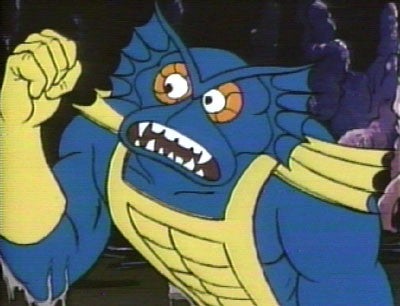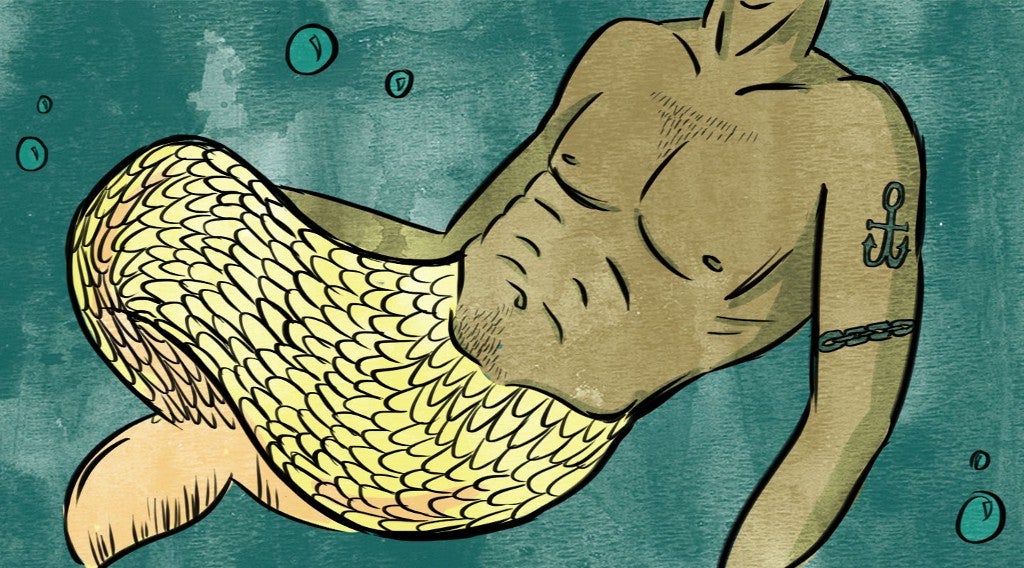Pity the poor merman. While mermaids are among the most celebrated creatures in mythology, their male counterparts have been perpetually overlooked and undervalued throughout history. Mermaids are sexy. Mermen are … kind of gross. But with DC Comics’s Aquaman set to receive an ultra-butch, armored-up makeover in the the upcoming Justice League movie, and now the very well-received news that professionally affable hunk Channing Tatum has been cast in the role of merperson love interest in a gender-flipped (flippered?) remake of the classic 1984 boy-meets-mermaid movie Splash, the age of the hot merman may be upon us.
The enduring popularity of mermaids is not mysterious. Basically, it’s because they’re hot. Many legends emphasize the comely ways of the mermaid, who is usually trying to use her charms to entice randy sailors and beachgoers into joining her in her soggy boudoir. Mermaids have an extremely European attitude when it comes to toplessness. Almost without exception, they have great hair.
Wetness may be the essence of beauty, but somehow, when it comes to merman, it’s never been quite enough. For that, we can probably thank our nasty internalized notions about masculinity. The primary pursuits of the merperson—which include lolling about, having a hot bod and preying upon hapless men—have historically been associated with femininity, and consequently (sexist though it may be, or rather is) have always seemed just a little bit silly, or at least de-eroticized. The fact that a merman’s most historically celebrated sex characteristics are definitionally absent doesn’t help. (At least mermaids have boobs.) If centaurs are mythology’s football captains, mermen are the guys who get picked last in gym class.
Does the Splash remake mean that mermen are finally about to have their day in the sun? Let’s hope so. But the very short list of merman icons is peppered with misfires and never-quite-made-its.

The early 1980s were a dark time for masculine-identified merpeople. While mermaids were seemingly everywhere, there were few places for young merboys to see themselves represented in popular culture. When they were depicted, the portrayals tended not to be positive. For most of his super-heroing career, Aquaman has struggled to be perceived as anything more than an ineffectual flibbertigibbet who can talk to fish.
Then there’s the He-Man villain, Mer-Man. Sure, he’s clearly some kind of an undersea humanoid, but despite his name he’s hardly a merman at all. Instead of having a mermaid’s fish tail and the torso of a human, Skeletor’s aquatic right-hand man instead possesses the bulging thighs of a sickly-green gym-bunny; no neck to speak of; and a grotesque, amphibian face with prominent fangs, bug eyes and giant webbed ears. (Do fish even have ears?) [Editor’s note: I think those are supposed to be gills.]

Most baffling of all, Mer-Man is disappointingly modest by the standards of both merpeople and He-Man characters. While He-Man and his nemesis Skeletor both unabashedly display their rippling midriffs at every opportunity, Mer-Man chooses to hide what Neptune gave him with body armor that covers both his chesty abundance and his navel. That’s not merlike!
Leave it to Madonna to be among the first to try her hand at turning the merman into a sex symbol: Her 1989 music video for “Cherish,” directed by legendary fashion photographer Herb Ritts, was a brave and groundbreaking turning point for merman representation. “Cherish” features Madonna romping in the surf with a bunch of busty, betailed merhunks (including her future boyfriend and Sex costar, the model Tony Ward), along with one adorable mer-moppet. The mermen of the “Cherish” video proudly let their fishtails flop, showing for maybe the first time that mermen, despite their traditionally fey image, can be sexy, fun-loving and manly.
But just months later, Disney’s The Little Mermaid would send us decidedly mixed messages about the place of merman in undersea society. Princess Ariel’s watery kingdom suffered from such a dearth of male citizenry that it’s no wonder the strong-willed heroine had to go looking for a suitor up there on land. Although an early script for Disney’s The Little Mermaid included a role for a wimpy, stringbean merman named Harold — who approaches the sea witch Ursula for an upgrade in the physique department — the scene was cut from the film before it was animated. In his absence, you’ll have to look hard to spot a few lonely mermen flipping their fins around the fringes of the movie.
There is, of course, one memorable exception: Ariel’s father, King Triton, represents everything that a merman can (and should) be. He’s a handsome silver-daddy alpha-king with a prodigious set of pectoral muscles and a large, masculine trident.
Sure, the “Cherish” mermen were beautiful and chiseled. But in the era of Tom Selleck, those mermen’s perfectly manicured (i.e., absent) body hair, coupled with their tendency toward synchronized water balletics, did little to make the case for mermen’s masculinity.
Not so for Triton, whose extravagantly unplucked eyebrows, luxurious white beard and domineering but loving demeanor epitomize perfect mermacho realness. Furthermore, unlike most depictions of the sea god Neptune (Triton’s … cousin, perhaps?), Triton qualifies as a true merman because he actually has a fish tail. Hello, Daddy!
Unfortunately, this momentum didn’t last, and the decades following The Little Mermaid saw mermen once again relegated to the background — or used as jokes, as in Zoolander’s dig at the concept of a mermen: “Moisture is the essence of wetness, and wetness is the essence of beauty.”
Asked to name his favorite merman in popular culture, Eric Ducharme — a professional merman and supplier of mer-couture — doesn’t even know where to start. “There really aren’t many, are there?” he says. “Honestly, I can’t think of any off the top of my head.”

Ducharme may be America’s most prominent merman, so if he can’t come up with any examples, you know there’s a problem. After starting his career as a teenager in the famed Weeki Wachee Springs production of The Little Mermaid, Ducharme answered the siren song of the undersea and now earns a living making regular appearances in mer-form. He also runs a business supplying other merfolk with carefully crafted tails and accessories. Ducharme knows the thirst for merman representation is out there, even if no one likes to talk about it. While a slim majority of his customers are women, he’s noticed a recent uptick of wannabe mermen. “Believe it or not, we have a 40:60 ratio of male to female clients,” he says. “I’ve seen a major influx of male clients lately. But most of the men seem to keep this aspect of their lives private and away from others. I’m not sure why — maybe they’re afraid of being judged.”
If anyone can change that, it’s Channing Tatum, whose winning combination of sexual charisma and approachability make him well-positioned to give mermen the respectability that has long eluded them. If that happens, it won’t be the first time Splash changed the world. When the original movie premiered in 1984, the name Madison — the name that Daryl Hannah’s mermaid character gives herself in the film — was practically unheard of. Just two years later, the popularity of the name had spiked dramatically, and by 2001 it was the second most popular name for baby girls in the U.S. Just imagine what Tatum’s abs could do for mermen.
So it’s possible that the days when part-time mermen have to hide from judgment will soon be over. But is the world truly ready for the dawn of the merman era? Ducharme, for one, is optimistic. “From his various roles it’s obvious that Tatum can play a serious role, a funny role and a romantic role,” he says. “Jumping in a tail is by no means a piece of cake, but I’m sure with a little practice it should be smooth swimming for him.”
